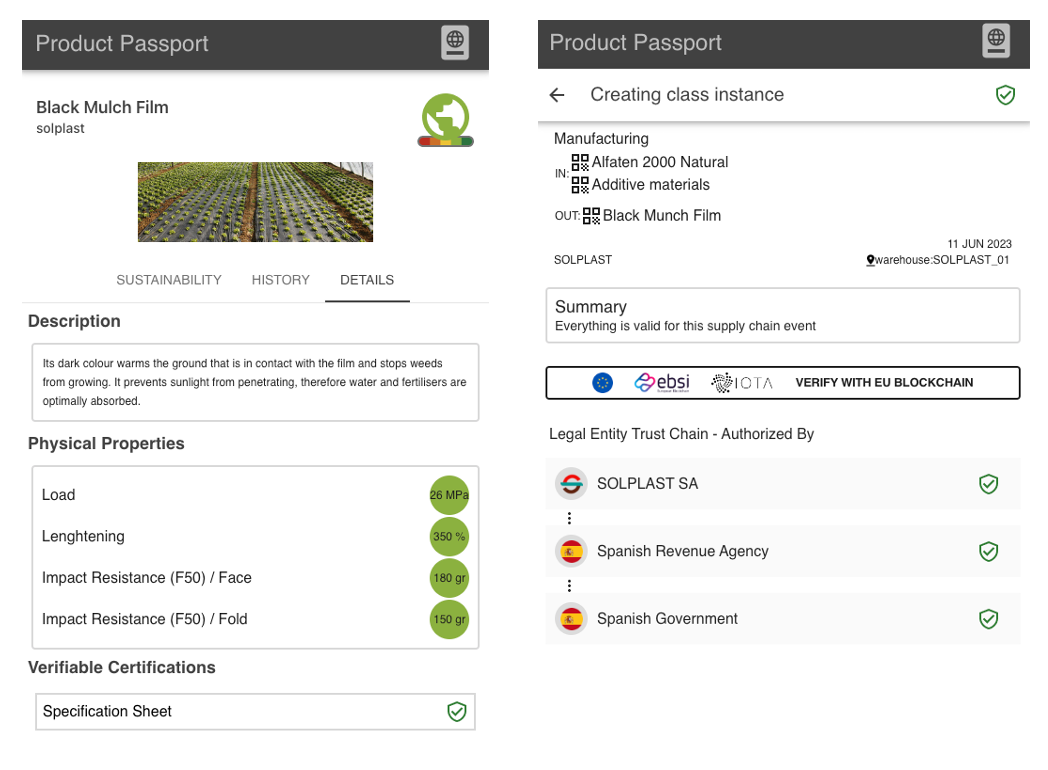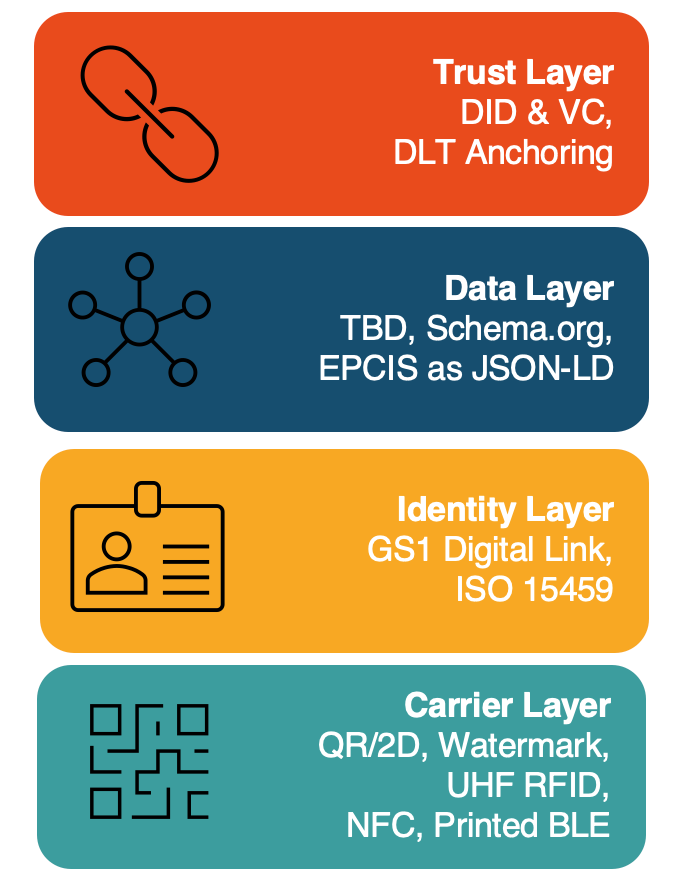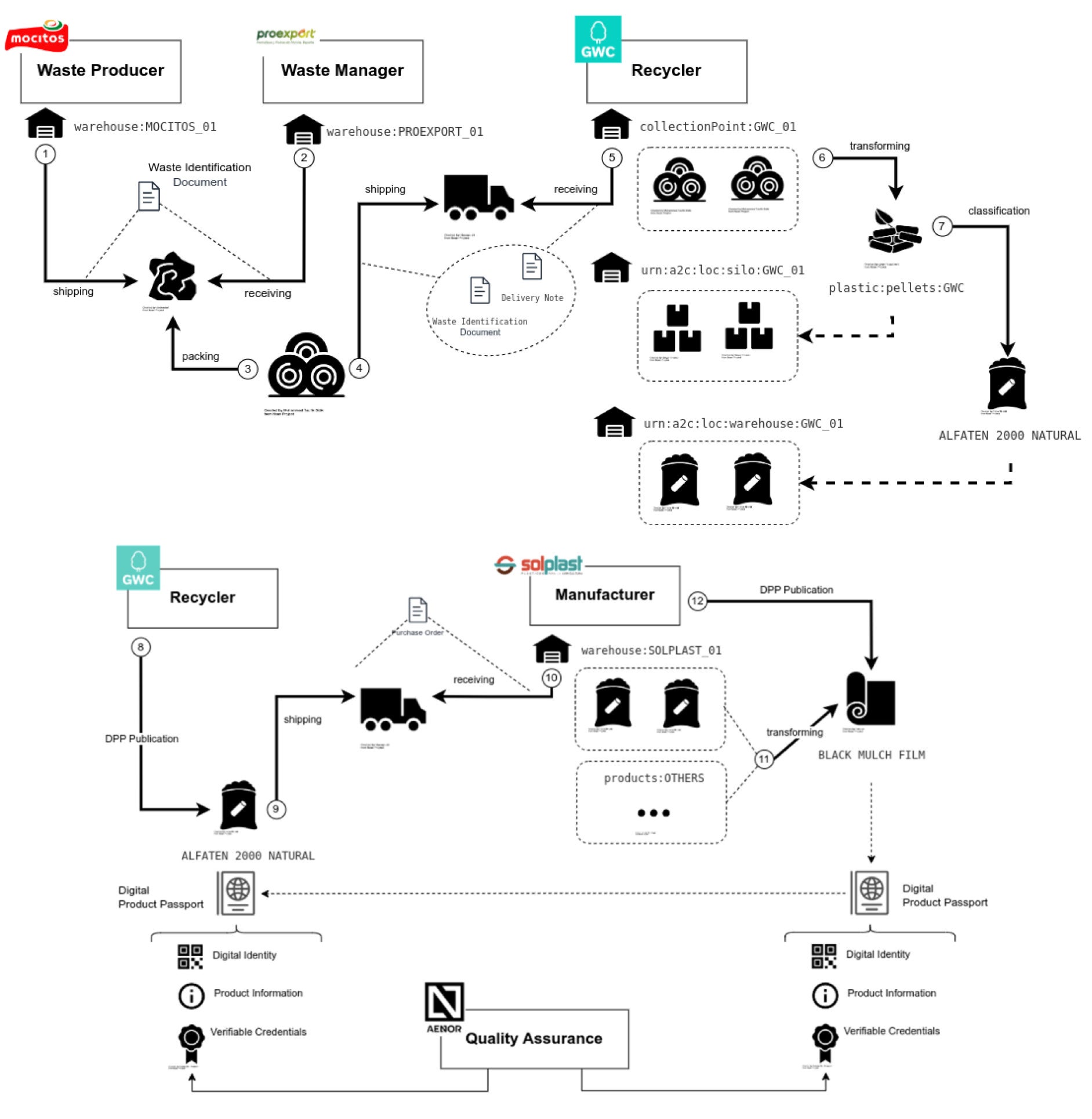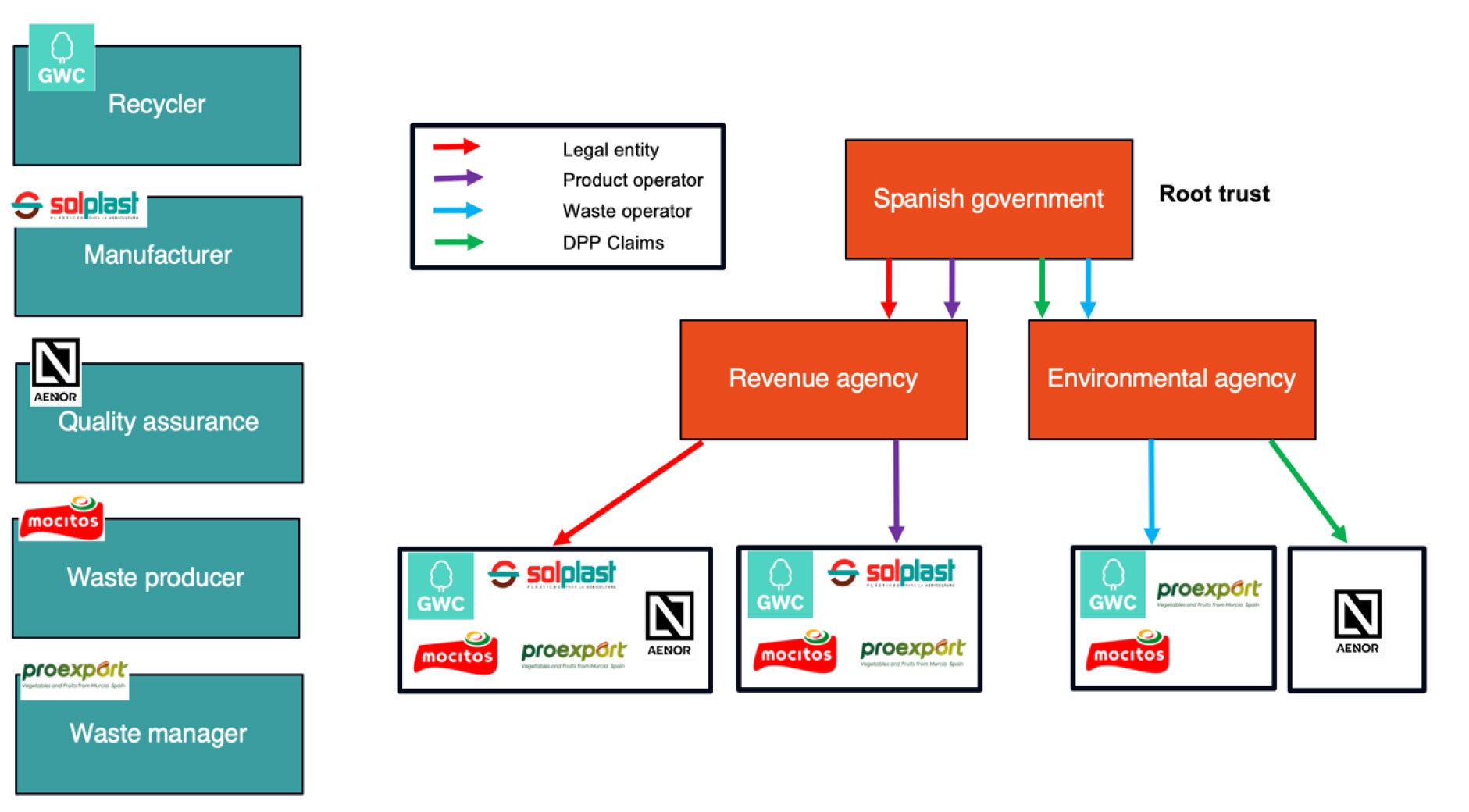On May 22, 2024, the European Commission adopted the core Digital Product Passport (DPP) regulation, marking a significant milestone for the European Green Deal framework. As soon as 2027, this regulation will require many products to feature a unique Digital Passport so that products can be tagged, identified, and linked to data relevant to circularity and sustainability.
Like what Nutriscore and apps like Yuka have achieved to help consumers make healthier choices, DPP aims to help consumers make greener choices. Moreover, it will help companies and governments leverage new opportunities to reduce products' environmental impact and encourage a more circular economy.
Last year, we published a report on our first DPP pilot and a blueprint on how to implement DPP using web identities, a digital twin platform, and a decentralized ledger. We have continued to expand our expertise and knowledge of the opportunities and challenges created by the DPP regulation – joining DPP standardization efforts led by the GS1 Circularity group and running a large scale DPP pilot in concert with the Agro2Circular EU project.
Our newest DPP pilot is a collaboration between IOTA and Digimarc in conjunction with the EU Blockchain Pre-Commercial Procurement Project — an EU project to develop the European Blockchain Service Infrastructure (EBSI). EBSI is a distributed ledger intended for use cases that deliver cross-border services to European citizens and businesses.
The last phase of the European Blockchain Pre-Commercial Procurement Project was field testing. To achieve this, we needed a use case and partners willing to test it. We found both through our participation in the Agro2Circular (A2C) project. In a nutshell A2C is an EU-funded research project focused on improving recycling and upcycling for the agri-food sector. For instance, using agri-food waste as a basis for cosmetics, nutraceuticals, or new bioplastic materials. Traceability and identification are key enablers of these processes: materials must be digitally traceable throughout the product lifecycle to be efficiently upcycled or recycled. This real-time product information is captured through a Digimarc digital twin (an advanced digital watermark or dynamic QR code) in the Digimarc Illuminate platform. Digimarc is collaborating with partners like CETEC to build a digital twin information system.
Our pilot with A2C addresses some of the challenges around recycling plastic in agri-food. Amongst other factors, the lack of digital identities and often unverifiable sustainability claims, creates unnecessary friction in the system.
Unsurprisingly, these processes involve multiple stakeholders, including waste producers, waste managers, recyclers, and manufacturers who use the recycled plastics to make new products. They also involve governmental or private agencies attesting to certain claims, such as the bioplastic nature of finished products or the content of recycled materials. Identifying and tracing the plastic throughout its life cycle and a digital twin platform, like the Digimarc Illuminate platform, allows leveraging this data for use cases ranging from handling instructions all the way to recycling sortation and reporting (e.g., Extended Producer Responsibility or EPR schemes).

At a high level, our blueprint comprises four layers: Carrier, Identity, Data, and Trust, representing key parts of our Digital Product Passport implementation.

At the carrier layer, QR codes are the common denominator, prominently mentioned in the Ecodesign for Sustainability Regulation (ESPR). This is mainly due to its consumer accessibility: most mobile phone cameras can natively scan a QR code without needing an additional application. However, not all use cases are a fit for QR codes. For example, we also work with construction material companies where digital watermarks are a better fit than QR codes.
At the identity layer, the ESPR calls for interoperable and standard based identities. GS1 Digital Link is the ideal candidate because it is both standard-based and easily accessible to consumers, thanks to a Web address or URL structure. As the co-chair of the working group that created the Digital Link standard, I am happy to see the standard adopted for critical applications. More importantly, it shows that using interoperable web standards is key for the future of product identities.
At the data layer, JSON is the predominant data format in several pilots including ours. More precisely JSON-LD as it helps with data interoperability and the ESPR requirement for data decentralization. At the semantic level, much is still to be defined. The first detailed data requirements are likely to appear via the sector specific delegated acts (e.g., regulation for apparel and footwear). For provenance and traceability data, we have been using the GS1 EPCIS 2.0 standard, which provides a structure and common vocabulary for supply chain events, and a web-based protocol to capture and query those events.
Preventing greenwashing and being able to back sustainability claims are some of the key goals of the DPP framework. A well-defined trust layer is critical. We have experimented with the use of Decentralized Identities (DID) and Verifiable Credentials. These essentially allow signing claims with verifiable signatures and ensure only those who are authorized to do so can sign claims.
We implemented this second pilot and blueprint for Digital Product Passport by leveraging learnings from our previous pilot and digging deeper into some of the challenges. We were interested in exploring how to allow different actors to access different data and make different claims as this is a central part of DPPs. These challenges arose naturally as the workflow involved several real-world stakeholders involved in the recycling of plastic waste into a finished mulch film. Mulch films are plastic films used to protect crops in the agricultural sector.
In essence, we instrumented the plastic recycling chain from the waste producers, all the way to the finished product containing recycled plastic. The process is detailed below.

The process creates two marketable products, requiring two Digital Product Passports.
1) A finished product (Black Mulch Film).
2) Alfaten, recycled plastic pellets, used in making mulch films.
Prior to this implementation, paper documents were exchanged at several steps. The pilot project records data as EPCIS 2.0 digital events recorded via GS1 Digital Link identities using the Digimarc Illuminate platform and anchored to the IOTA ledger to make the data tamper-proof. This process also allows authorized contributors to the product journey to record data or claims about the products. For example, quality assurance experts can certify the content of both the finished product and the plastic pellets (e.g., confirming the products contain recycled plastics).
Allowing any stakeholder to make these claims could lead to false claims. To prevent this from happening, we defined a trust model based on Decentralized Identities (DIDs) and Verifiable Credentials (VCs). DIDs are a standard way of expressing digital identities for people and organizations in a decentralized manner. VCs are a standard way of using DIDs to sign claims in a distributed way. We used these technologies via the IOTA distributed ledger to create a trust model. For example, and as shown below, the root of this trust model could be a central government issuing identities issuing their DID to other agencies who in turn issue identities to other stakeholders in the supply chain. Alongside the issuance of identities, the type of claims that a stakeholder is authorized to make and to read are defined using the GS1 Common Business Vocabulary (CBV) standard. More concretely, this means that claims such as the presence of recycled plastic can only be made by competent and authorized stakeholders. The identity and claims are programmatically verified on a decentralized network, thus reducing the risk of actors making false claims.

The rest of the system is implemented on top of the Digimarc Illuminate platform. Product identities are issued as QR codes containing GS1 Digital Link Web addresses serviced by Digimarc Engage. Product data and selected life-cycle events are stored in the Digimarc Illuminate platform and two additional components are responsible for gathering the passport data from different sources (DPP Builder) and rendering it (DPP viewer).

With this second pilot we were able to dig deeper into what the future of passport carrying products might look like. Together with IOTA and the Agro2Circular research consortium, we have piloted how modern technologies like Decentralized Identifiers and Verifiable Credentials can be used to pave the future for trustable and verifiable Digital Product Passports.
While many unknowns require research and development, it does not mean brands should wait to prepare to adopt Digital Product Passports. The core requirements are known and will require a significant amount of preparation to be ready for 2027. We are consolidating the architecture shared in this blog and extending the pilot to additional stakeholders with different supply chains. I invite you to contact us to consult on the future of Digital Product Passports. Now is the time to get started -- adopting digital identities for your products using the Digimarc Illuminate platform and Digimarc Engage.

Part of this work was performed by the IOTA Foundation and Digimarc as participating contractors in the European Blockchain Pre-Commercial Procurement under Framework Contract nºFW-00110980. The Agro2Circular project has received funding from the European Union’s Horizon 2020 research and innovation programme under grant agreement No 101036838.
